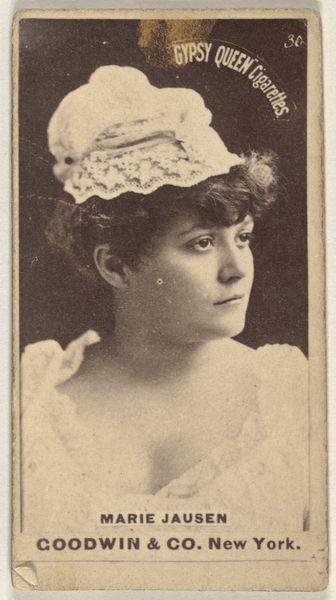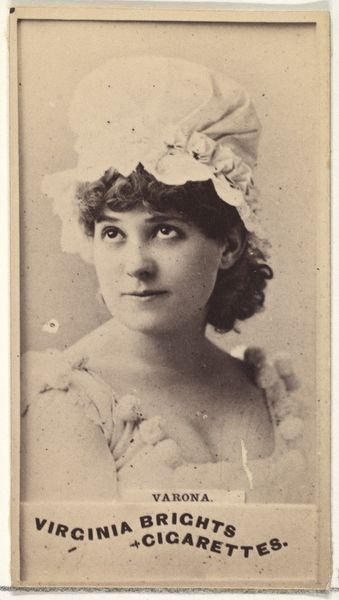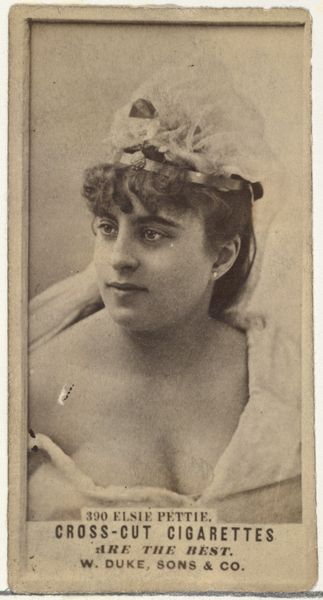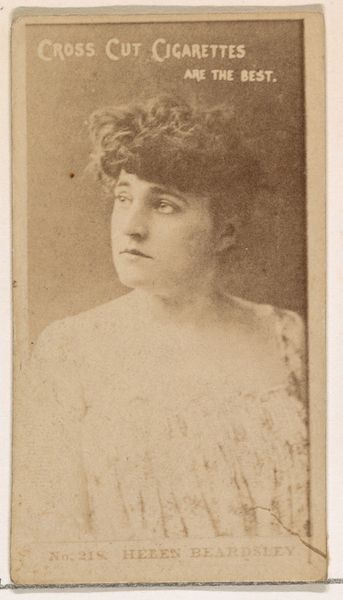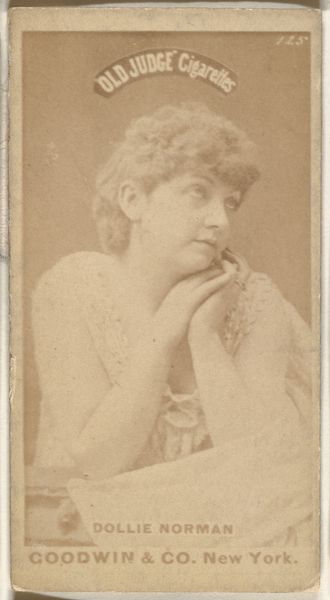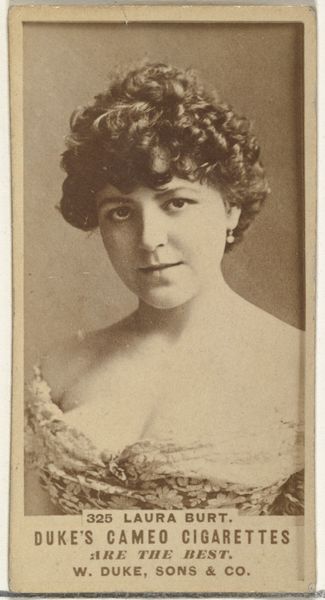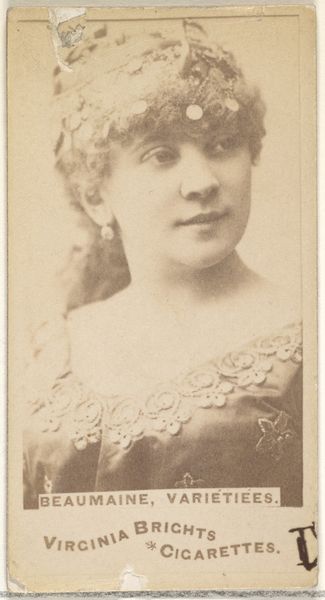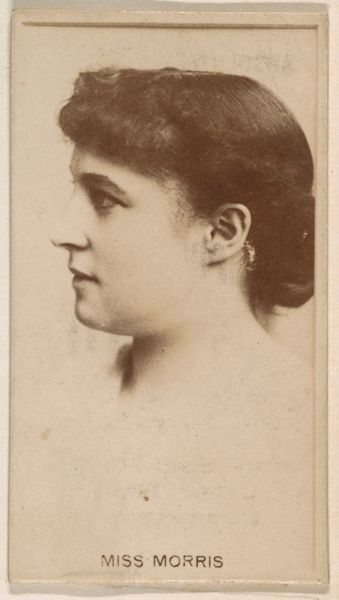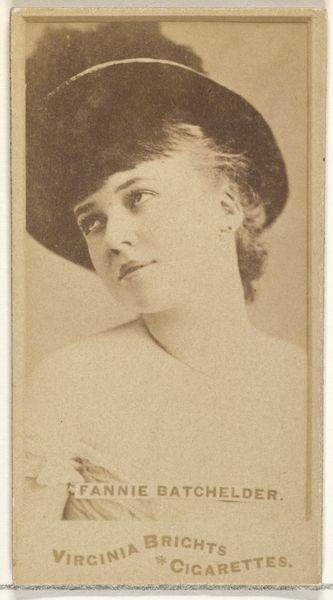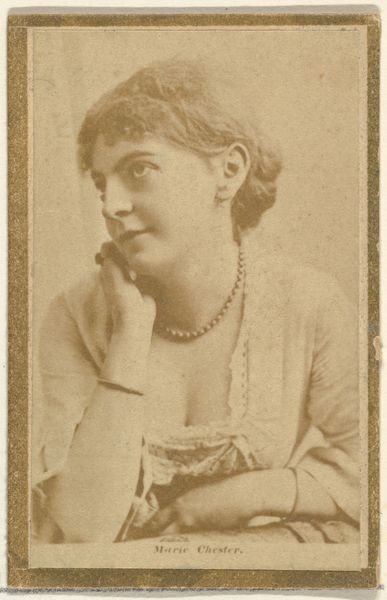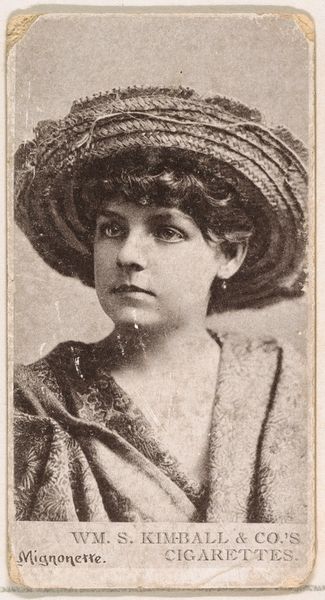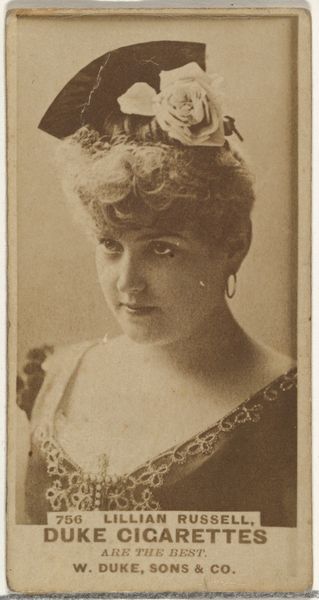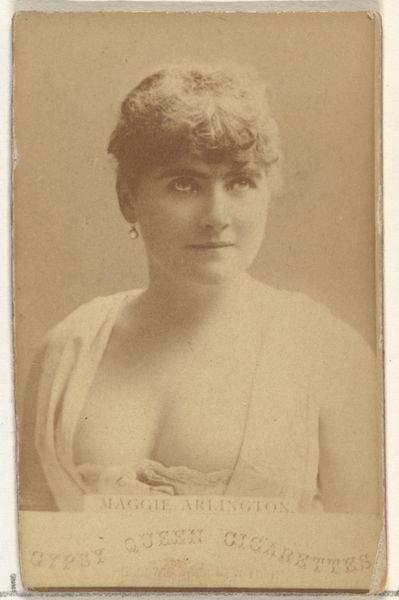
Card Number 103, Lizzie Hight, from the Actors and Actresses series (N145-6) issued by Duke Sons & Co. to promote Duke Cigarettes 1880s
0:00
0:00
drawing, print, photography
#
portrait
#
drawing
# print
#
charcoal drawing
#
photography
#
pencil drawing
Dimensions: Sheet: 2 11/16 × 1 3/8 in. (6.8 × 3.5 cm)
Copyright: Public Domain
Curator: This card, "Card Number 103, Lizzie Hight," from the 1880s, produced by Duke Sons & Co., offers more than just a pretty portrait; it presents a fascinating snapshot of late 19th-century marketing strategies. What grabs you first about it? Editor: Well, it's quite charming. I’m drawn to the almost ethereal quality of the portrait itself, achieved through what looks like careful photographic techniques and drawing combined. But then you have the "Duke Cigarettes" blazoned across the top. It's such a strange juxtaposition, isn't it? What can you tell me about this piece? Curator: Precisely. The image's artistic merit is intentionally intertwined with the advertising of a commodity. Let's consider the labor involved: from cultivating tobacco and manufacturing cigarettes, to staging the actress's portrait, printing these cards, and distributing them. How do these combined elements contribute to your understanding? Editor: That's an interesting point. I hadn’t thought about it like that. It feels like a way of adding perceived value to the cigarettes themselves. Like by association, they are elevating a mass-produced object with art, which also suggests social capital with the association of the actress' image. Is this form of commercial “art” common for this time? Curator: Exactly. We see these actor and actress cards used in promoting many products and reaching new consumer bases, offering insight into popular culture of that time, which was driven by increased production and expanded marketplaces. They blurred the line between "high art" and commercial appeal. Editor: So, it’s not just a portrait of Lizzie Hight; it’s a small part of a larger system of labor, consumption, and marketing. Curator: Indeed! By looking at the materials, the processes, and the social context, we start to see how this seemingly simple card tells a bigger story about the culture of that era. Editor: That’s a whole new way of looking at trading cards. Thank you. Curator: My pleasure! Now we are better able to appreciate what they reveal about Victorian values and capitalism.
Comments
No comments
Be the first to comment and join the conversation on the ultimate creative platform.
